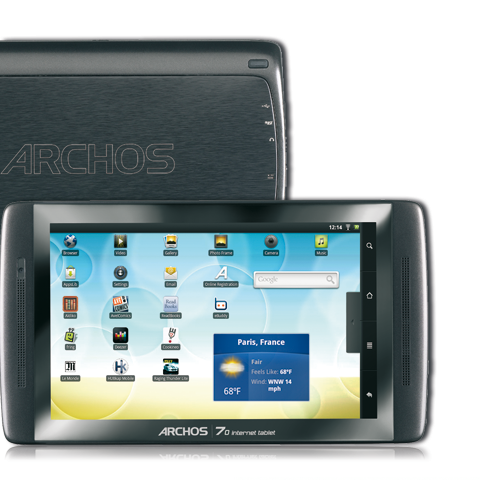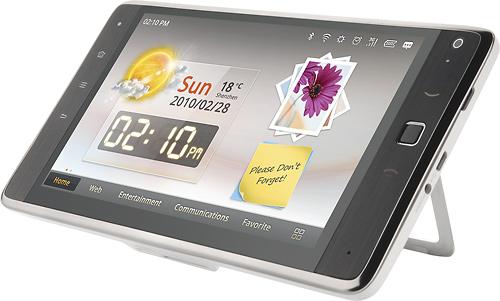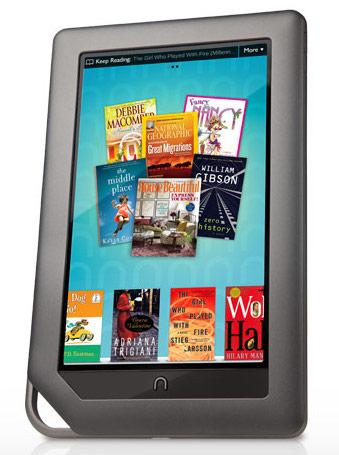Android tablets have been making their way onto the scene left and right. This holiday season, a lot of kids and spouses alike are going to be begging and pleading for a tablet of their very own. This leaves a lot of parents in a bind as many of the tablets making their way to the market are typically carrying a weighty price tag of $400 and up. Below is a list of Android tablets available for below the $300 price mark.
While the price tags may look lovely and have little effect on your bank account, these will not launch you into the future, and could leave you wanting for more. The higher up on the list you focus, the better the outcome will be. The lower you look on the list, the more sacrifices you will make for the more appealing price.

Where it excels: The Archos 70 offers an affordable capacitive touchscreen, a front-facing camera, and Android 2.2 for a fairly decent price of $274.99. Archos is notable for their great hardware (minus the resistive touchscreens in previous models), and I expect this to be just as good or better. The 70 has a 7-inch TFT LCD display with 800 by 480 pixel resolution, an expandable microSD card slot, HDMI output, built-in kickstand, and offers comparable battery life to the iPad.
Where most sub-$300 Android tablets offer Wi-Fi 802.11 b/g, the Archos 70 adds an additional support for Wi-Fi N. Also, where most of those tablets will be running Android 2.1 and below with little to no hope of ever getting a taste of that sweet, sweet Froyo, the 70 ships with it, and I wouldn't be surprised at all if it receives future updates as Archos has always been pretty good about updating their firmware.
Where it stumbles: The price, while still relatively cheap compared to many of the other competing Android tablets, is still pretty high. It's low enough to be considered “cheap” but in comparison to the other “cheap” tablets, this hits the high mark. Also, Archos has removed access to Android Market from the device. You are limited to Archos' lightweight market of their own by the name of AppsLib. There were ways to get around this and install Android Market on the previous versions, so there is always hope.
The verdict: For the price, the Archos 70 brings most of the things we were hoping to see in the other sub-$300 devices. The Internet browsing on it should be par and the battery life should be nice as well. Archos has removed the Market for their own library that lacks many features that most of you will be looking for in the tablet in the first place.
For $274.99, you can't really find better. The 70 is the only tablet in that price range running a current version of Android and sporting a capacitive touchscreen.

Where it excels: For a decent price of $299.99, you're getting the closest thing to a higher-quality tablet that you can. It has a 7-inch HD display, 1 GHz Snapdragon processor, 8 GB internal memory with 512 MB RAM, Android 2.1, and a nice, sturdy built-in kickstand. It comes with a custom UI from Huawei that doesn't look bad at all.
The screen is clear and crisp and plays in HD. Other than that, it's hard to say due to very little specifications being listed about it. I have hit up the local Best Buy and snagged a Buyer's Guide which really doesn't tell a whole lot about it, so this one is a bit of a shot in the dark.
Where it stumbles: Rather than having a preferred capacitive display, it wears a burdened resistive touchscreen, but is apparently pretty responsive. Even Engadget mistook the resistive screen as capacitive if that says anything. It is also more expensive than any other device on the list and barely made it due to that.
The verdict: It comes in second due to its slightly higher price tag and running Android 2.1 versus 2.2. I know that's software that can ultimately be upgraded later on, but we all know how Android updates go. They're normally long and drawn out, taking months of push-backs before any real result occurs. The resistive touchscreen really is a tablet killer for me. I've had an Android tablet with a resistive touchscreen and it was a hassle a lot of the time. Also, there isn't any word on whether Android Market is available on the S7 or not.

Where it excels: E-reading is obviously this tablet's game. For $249, Barnes & Noble has ventured away from the sole e-reader and made this upcoming device into the perfect e-reader/tablet combo. Little is known about this puppy thus far, but there is talk of it having third-party application support. This will be primarily for the Internet browsing, word consuming, book worm.
There will also be support for children's books with this device. Where the Kindle and other e-readers fail with support for playful, colorful children's book, the Nook Color will dominate, for now. It comes preloaded with some Android applications out-of-box like Pandora and Lonely Planet.
Where it stumbles: Not being built primarily with e-reader in mind, we're not going to see that superior battery life that they have been known to sport. This device is rated at 8-hour battery life while reading with Wi-Fi off. It also isn't going to be for a power user. This is aimed mainly at people looking to consume whether it be via video, e-magazine subscriptions, books, or Internet blogs. Gaming and such will probably be doable with third-party support, but not ideal.
The verdict: For the price, it isn't bad. Generally, all I want a tablet for is browsing and reading anyway. Games are fun, but I buy them and never find myself using them. That's why I have a console at home. For tablet and reading purposes, this may be perfect for the college kid looking to save on book costs their next semester, middle to high school students looking for a personal media player with extended capabilities, or even mom and dad wanting to surf the web from the couch while listening to some Pandora radio.
It's a bit of a gamble to buy this hoping for a full Android experience, but it technically does run Android.

(Note: This is where the slope becomes slippery, the price appropriately represents quality decrease.)
Where it excels: For the relatively low price of $188, you can own Cherrypal's iPad-esque CherryPad. The CherryPad sports a 7-inch resistive touchscreen, 2GB of flash storage with an expandable microSD slot, a 800MHz ARM11 processor, with Android 2.1. The firmware should also be updated to 2.2 in the future, but with companies like this, you probably wont see any timely updates.
Within this price range, you typically see a 600 MHz processor, but the CherryPad is packed with a slightly faster 800 MHz. Still, it's nothing to write home about, nor are you going to be browsing the Internet at breakneck speeds.
Where it stumbles: The resistive touchscreen should be an instant turnoff to any self-respecting Android user, but for a sub-$200 price tag, that is what you have to expect. Resistive touchscreens with Android never seem to play well. It's usable, but in every way a nuisance. You have to use your fingernail or apply a lot of pressure to get the touch to register. Many times you will find yourself repeatedly pressing an icon trying to launch an application.
The design is a blatant iPad knock-off, but with much cheaper hardware. The bezel surrounding the screen is made of a cheap plastic and easily dented, and depresses easily with a press of the finger.
The verdict: If the name doesn't turn you away automatically, the cheap hardware and resistive touchscreen should. However, if you're looking below the $200 range, this appears to be your best bet.

Where it excels: The Maylong M-150 is fairly priced at $129.99, and you will definitely get your 130 dollars' worth, nothing more. This excels by keeping your wallet padded while getting your Android fix in your hands.
Where it stumbles: The specifications listed on Walgreens' website doesn't list what version of Android this wallet-friendly tablet sports, but it does show a custom UI in the picture. The UI looks very similar to the Archos 7 Home Tablet without the app drawer. The entire spec sheet is under-stimulating, but what do you expect for just slightly over one Benjamin Franklin?
This design looks almost identical to the CherryPad (save the iPad-like home button), and I imagine that the hardware is just as cheap as the picture makes it appear. This one also has its own app library, appropriately named “App Market” which leads me to believe that there is no Android Market support. With that being said, I highly doubt the Maylong tablet will round up a fraction of the development support the Archos tablets will, so if you're looking for your 100,000 Android applications, you might want to stick with a previously mentioned tablet.
The verdict: There are many other tablets available in this price range, I'm just naming one. It's impossible to sift through the hundreds available on eBay and determine which are vaporware and which actually exist and carry the specs they claim to carry. This should be your last resort to buying an Android tablet. The price tag seems friendly, but you are sacrificing a lot for the lower cost. This device will be good for someone who likes to tinker and does want something Android, but not for someone expecting a Samsung Galaxy Tab-like experience. If you're wanting to save a buck and give them that, look at number one and two in this list. Those will be the closest you will get in the sub-$300 range.